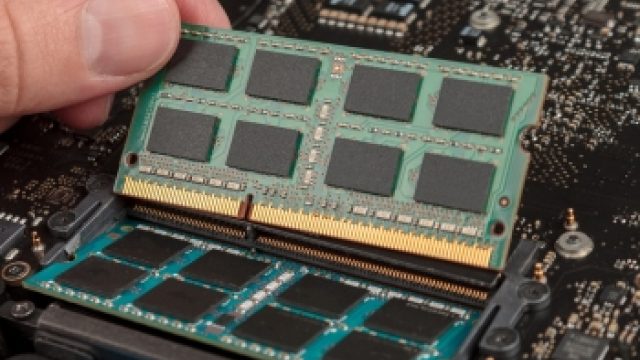When it comes to choosing the right RAM for your computer, the clock speed is an essential factor to consider. Two common options in the market are 1333 MHz vs 1600 MHz RAM.
The clock speed, measured in megahertz (MHz), determines how quickly data can be accessed and transferred within the RAM module.
While 1333 MHz RAM provides decent performance for everyday tasks and casual gaming, 1600 MHz RAM offers a noticeable boost in speed, making it ideal for more demanding applications and gaming enthusiasts.
Ultimately, the choice between the two depends on your specific needs and budget, as higher clock speeds usually come with a higher price tag.
Understanding RAM Speed
RAM (Random Access Memory) is a crucial component in computer systems that plays a vital role in determining overall performance. When it comes to RAM, speed is an essential factor to consider.
The speed of RAM is measured in megahertz (MHz) and represents how quickly the RAM can transfer data.
Importance of RAM in Computer Performance
RAM serves as a temporary storage area for data that the computer’s processor needs to access quickly.
The more RAM a computer has, the more data it can store for immediate access, reducing the need to retrieve information from slower storage devices like hard drives.
This leads to faster and more efficient computing, especially when running multiple applications simultaneously or working with resource-intensive tasks such as gaming or video editing.
Overview of 1333 MHz RAM
1333 MHz RAM is a type of RAM module commonly found in older computer systems. It operates at a frequency of 1333 million cycles per second, allowing for a transfer rate of 1333 million data units per second.
While it may not match the performance of newer RAM modules, it still offers a reliable solution for many computing needs.
Overview of 1600 MHz RAM
On the other hand, 1600 MHz RAM is a more recent variant that offers increased speed and improved performance compared to 1333 MHz RAM. Operating at a frequency of 1600 million cycles per second, it enables a faster transfer rate of 1600 million data units per second. This higher speed can significantly enhance the overall responsiveness of a computer system.
Related Article: Best Laptops for CNC Machine
1333 MHz vs 1600 MHz RAM: Performance Comparison
When comparing 1333 MHz and 1600 MHz RAM, it’s important to consider the performance impact that the increased speed can have.
In theory, the higher speed of 1600 MHz RAM allows for quicker data transfers, which can result in improved overall system responsiveness and reduced loading times for applications and files.
Factors Affecting RAM Speed
Although RAM speed plays a vital role in computer performance, it’s essential to understand that other factors can also influence the overall system speed.
The processor, storage devices, and graphics card all contribute to the overall performance, and an imbalance in these components can limit the impact of faster RAM.
Real-World Performance Impact
In real-world scenarios, the performance difference between 1333 MHz and 1600 MHz RAM might not always be easily noticeable.
For day-to-day computing tasks, such as web browsing, document editing, or email, the disparity in speed may not be significant enough to justify the cost difference between the two types of RAM.
Overclocking Potential
For tech enthusiasts and gamers looking to squeeze every ounce of performance out of their systems, overclocking RAM can be an option.
Overclocking involves running RAM modules at speeds higher than their rated frequency. However, it’s important to note that not all RAM modules are designed for overclocking, and doing so can void warranties or cause stability issues if not done correctly.
Price Considerations
Price is a crucial factor for many when choosing between 1333 MHz and 1600 MHz RAM. Generally, 1333 MHz RAM tends to be more affordable compared to its higher-speed counterpart.
If budget constraints are a concern, opting for 1333 MHz RAM may be a more cost-effective choice while still providing satisfactory performance for most computing needs.
Compatibility and Upgradability
Another aspect to consider is compatibility and upgradability. When upgrading or building a new system, it’s essential to ensure that the motherboard and processor support the desired RAM speed.
Some older systems might not be compatible with 1600 MHz RAM, limiting the upgrade options. Therefore, it’s crucial to check the system specifications and compatibility requirements before making a decision.
Related Article: Does RAM Speed Affect FPS
Power Consumption and Heat Generation
Higher-speed RAM modules often require more power to operate, leading to increased power consumption and heat generation.
While this might not be a concern for most users, those who prioritize energy efficiency or have compact systems with limited cooling capabilities might find the lower power requirements of 1333 MHz RAM to be advantageous.
Overcoming RAM Limitations
While RAM speed is important, it’s essential to note that increasing the amount of RAM can often have a more significant impact on performance than solely focusing on speed.
Adding more RAM allows the computer to store larger amounts of data, reducing the need to access slower storage devices frequently.
Expert Opinions and Recommendations
Experts generally agree that the overall performance difference between 1333 MHz and 1600 MHz RAM might not be substantial for regular computer users.
Unless engaged in tasks that heavily rely on RAM speed, such as video editing or high-end gaming, the average user can find satisfactory performance with 1333 MHz RAM.
However, if budget permits, and compatibility and upgradability are not concerns, opting for 1600 MHz RAM can provide a slight boost in overall system responsiveness.
FAQs About 1333 MHZ vs 1600 MHZ RAM
Is there much difference between 1333 and 1600 RAM?
Yes, there is a difference between 1333MHz and 1600MHz RAM. The difference lies in the clock speed at which the RAM operates.
While both are DDR3 RAM types, the 1600MHz RAM operates at a higher frequency, allowing for faster data transfer rates and potentially better performance.
Which is faster 1333MHz or 1600MHz?
In terms of raw clock speed, 1600MHz RAM is faster than 1333MHz RAM.
The higher frequency of 1600MHz RAM allows for faster data transfer rates, which can result in improved overall system performance, especially in memory-intensive tasks.
Can I use 1600MHz instead of 1333MHz?
Yes, you can use 1600MHz RAM instead of 1333MHz RAM, provided that your motherboard supports the higher frequency.
However, if your motherboard only supports up to 1333MHz, the 1600MHz RAM will operate at the maximum supported speed, effectively downclocking to match the motherboard’s capabilities.
Can I use 1600MHz RAM on a 1333MHz CPU?
Yes, you can use 1600MHz RAM on a 1333MHz CPU. The CPU’s clock speed does not directly affect the RAM’s compatibility or operation.
As long as your motherboard supports the 1600MHz RAM and you install it correctly, it should work without any issues, although it will operate at the maximum supported speed of the CPU, which in this case is 1333MHz.
Is 16GB RAM 1600MHz good for gaming?
Yes, 16GB of RAM operating at 1600MHz is generally considered good for gaming. It provides a decent amount of memory capacity, allowing for smooth gameplay and multitasking.
While higher RAM speeds can offer slight performance improvements, the difference between 1600MHz and higher frequencies may not be significant in terms of gaming performance.
Is 1600MHz DDR3 good for gaming?
Yes, 1600MHz DDR3 RAM is still suitable for gaming, especially when paired with a capable CPU and graphics card. While newer DDR4 RAM offers higher frequencies and potentially better performance, DDR3 at 1600MHz can still provide sufficient speed for most gaming applications, unless you have specific requirements for the latest technologies.
Which DDR3 RAM is the fastest?
Among DDR3 RAM modules, the fastest ones typically have the highest clock speeds. In general, DDR3 RAM with a clock speed of 2133MHz or higher can be considered among the fastest available for the DDR3 standard.
However, it’s important to note that the actual performance gain from these high-speed modules may be minimal in real-world usage scenarios.
Is 1600MHz DDR3 or DDR4 better?
DDR4 RAM is generally considered superior to DDR3 RAM due to several factors, including higher clock speeds, increased bandwidth, and improved power efficiency.
While 1600MHz DDR3 RAM can still offer decent performance, DDR4 RAM at the same frequency or higher will generally provide better overall performance and better compatibility with newer systems.
Is 8GB DDR3 1600MHz RAM good for gaming?
An 8GB DDR3 RAM module operating at 1600MHz is still suitable for gaming, especially if you are using a mid-range or older system.
While higher memory capacities and frequencies may offer some benefits, 8GB at 1600MHz can handle most modern games without significant performance bottlenecks, provided that other system components are also sufficient for gaming.
Which version of RAM is the fastest?
Among the common RAM types, DDR4 is currently the fastest. DDR4 RAM offers higher clock speeds and improved bandwidth compared to its predecessors, such as DDR3 or DDR2.
However, it’s important to consider the compatibility of DDR4 RAM with your system, as newer motherboards and processors are required to fully utilize its potential.
Is 1600 RAM speed bad?
No, 1600 RAM speed is not bad. It can still provide satisfactory performance for various tasks, including gaming and general computing.
While higher RAM speeds exist, 1600MHz is considered a decent frequency and can offer a good balance between performance and cost-effectiveness, especially for mid-range systems.
What is the difference between DDR3 and DDR3L?
The main difference between DDR3 and DDR3L lies in their operating voltage levels. DDR3 operates at 1.5V, while DDR3L operates at a lower voltage of 1.35V. DDR3L is designed to be more power-efficient and suitable for use in systems that require lower power consumption, such as laptops and small form factor PCs.
DDR3L modules are typically backward-compatible with DDR3 systems, but the voltage difference should be taken into account when installing or upgrading RAM.
Which is better, DDR3 1333 or 1600?
In terms of raw performance, DDR3 1600MHz RAM is better than DDR3 1333MHz RAM. The higher clock speed of 1600MHz allows for faster data transfer rates, resulting in potentially improved system performance.
However, the actual impact on overall performance may vary depending on the specific applications and system configuration, so it’s essential to consider other factors as well, such as CPU and graphics card capabilities.
Is it OK to mix RAM MHz?
Mixing RAM with different clock speeds (MHz) can lead to compatibility issues and may cause the RAM to operate at the speed of the slowest module.
While it is technically possible to mix RAM with different frequencies, it is generally recommended to use RAM modules of the same speed to ensure optimal performance and stability.
If you do mix RAM modules, the system will typically adjust to the lowest common frequency between them, potentially limiting the benefits of higher-speed RAM.
Final Thoughts About 1333 MHZ vs 1600 MHZ RAM
In conclusion, the choice between 1333MHz and 1600MHz RAM depends on your specific needs and system configuration.
While 1600MHz RAM offers a higher clock speed and potential performance advantages, the real-world difference may not be significant in most scenarios, especially for gaming and general computing tasks.
If you have a compatible motherboard and CPU, opting for 1600MHz RAM can provide a slight boost in performance.
However, if your system supports only up to 1333MHz or if budget constraints are a concern, 1333MHz RAM can still deliver satisfactory performance.
Ultimately, it’s important to consider the overall system setup and prioritize other components for optimal performance gains.


